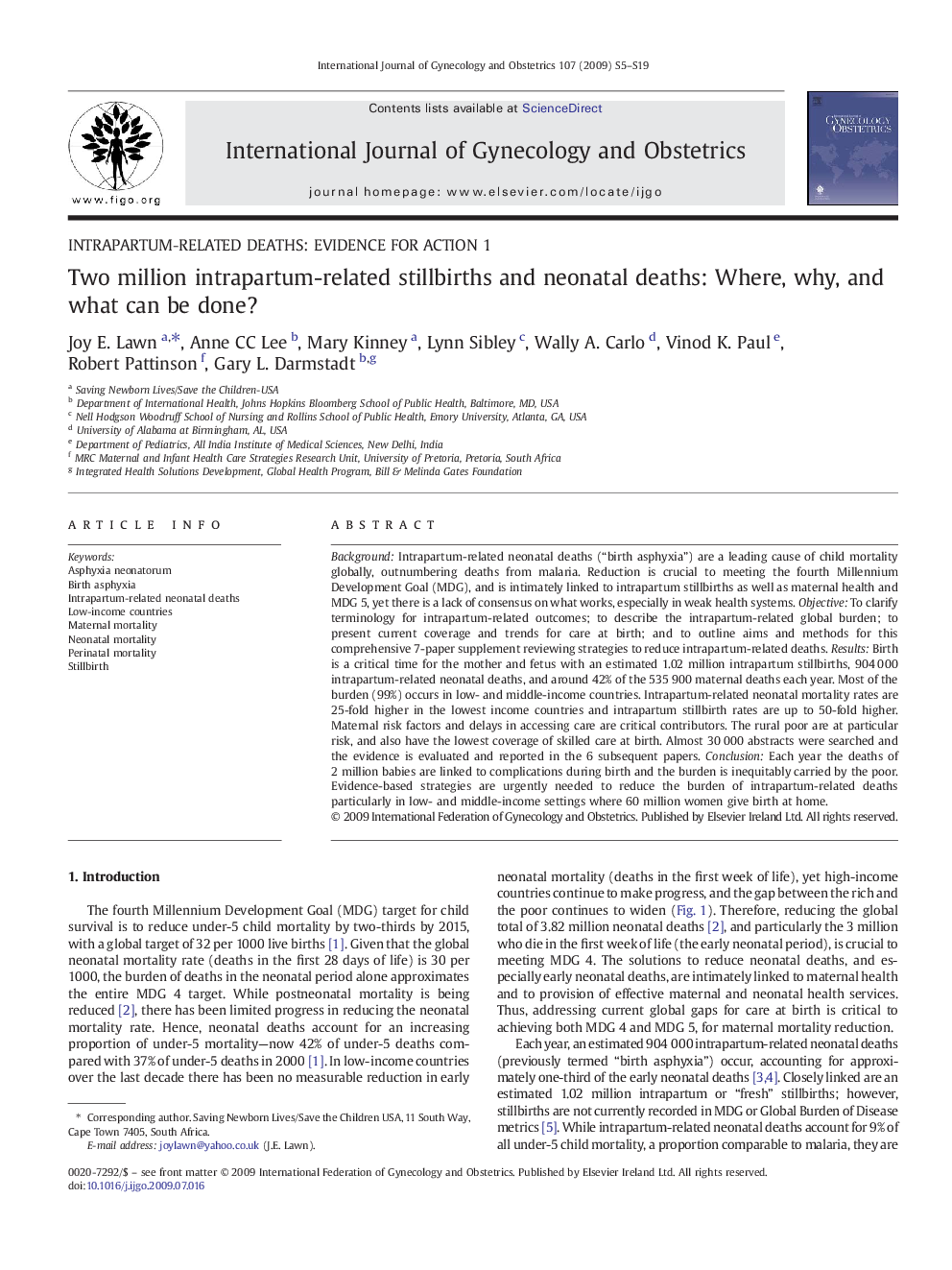| Article ID | Journal | Published Year | Pages | File Type |
|---|---|---|---|---|
| 3949985 | International Journal of Gynecology & Obstetrics | 2009 | 15 Pages |
BackgroundIntrapartum-related neonatal deaths (“birth asphyxia”) are a leading cause of child mortality globally, outnumbering deaths from malaria. Reduction is crucial to meeting the fourth Millennium Development Goal (MDG), and is intimately linked to intrapartum stillbirths as well as maternal health and MDG 5, yet there is a lack of consensus on what works, especially in weak health systems.ObjectiveTo clarify terminology for intrapartum-related outcomes; to describe the intrapartum-related global burden; to present current coverage and trends for care at birth; and to outline aims and methods for this comprehensive 7-paper supplement reviewing strategies to reduce intrapartum-related deaths.ResultsBirth is a critical time for the mother and fetus with an estimated 1.02 million intrapartum stillbirths, 904 000 intrapartum-related neonatal deaths, and around 42% of the 535 900 maternal deaths each year. Most of the burden (99%) occurs in low- and middle-income countries. Intrapartum-related neonatal mortality rates are 25-fold higher in the lowest income countries and intrapartum stillbirth rates are up to 50-fold higher. Maternal risk factors and delays in accessing care are critical contributors. The rural poor are at particular risk, and also have the lowest coverage of skilled care at birth. Almost 30 000 abstracts were searched and the evidence is evaluated and reported in the 6 subsequent papers.ConclusionEach year the deaths of 2 million babies are linked to complications during birth and the burden is inequitably carried by the poor. Evidence-based strategies are urgently needed to reduce the burden of intrapartum-related deaths particularly in low- and middle-income settings where 60 million women give birth at home.
